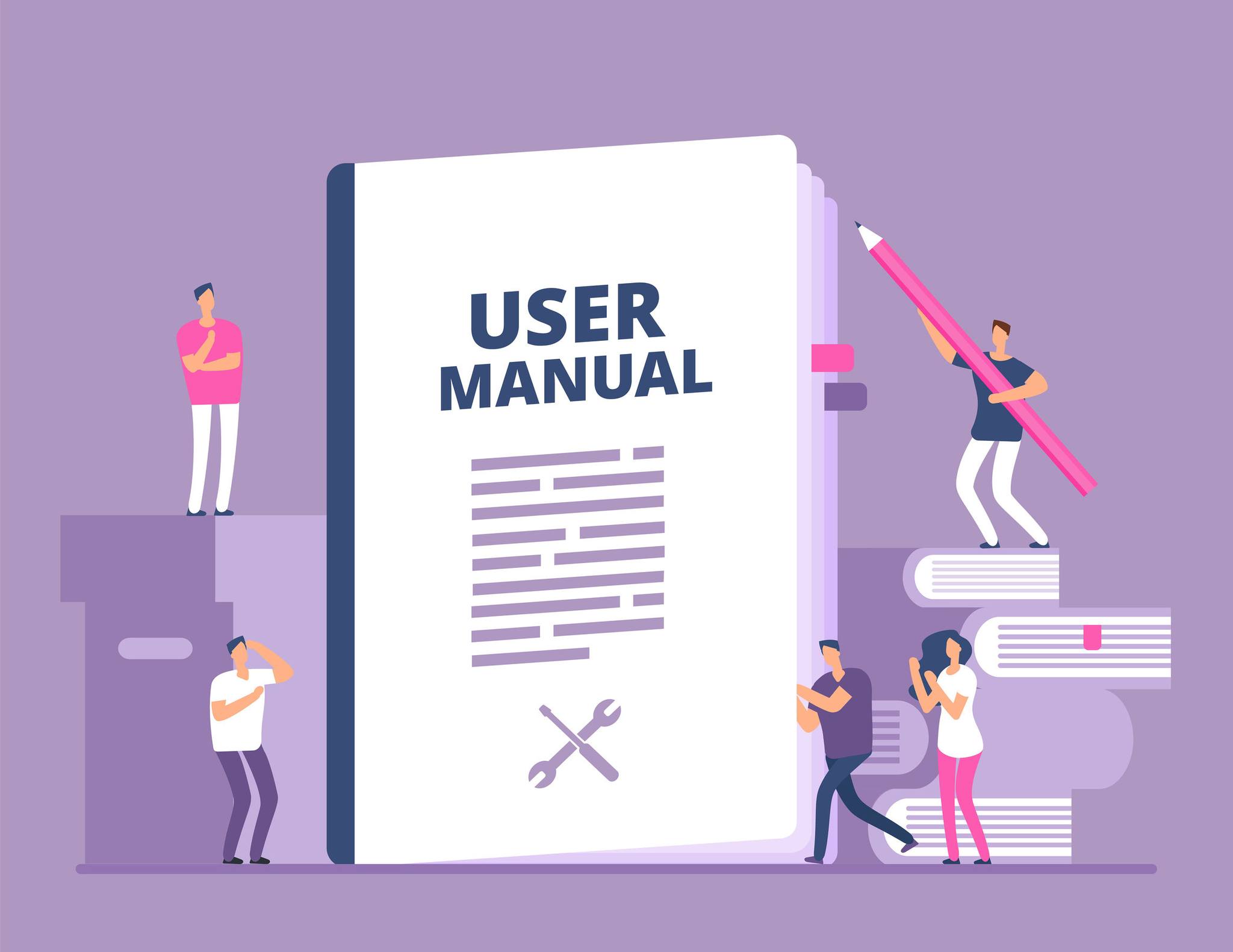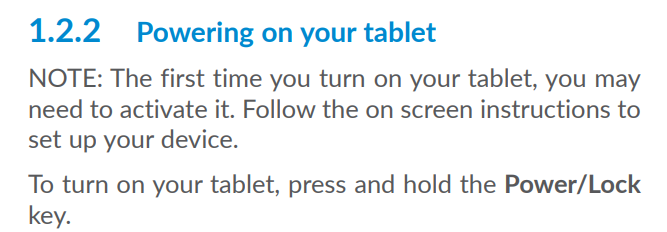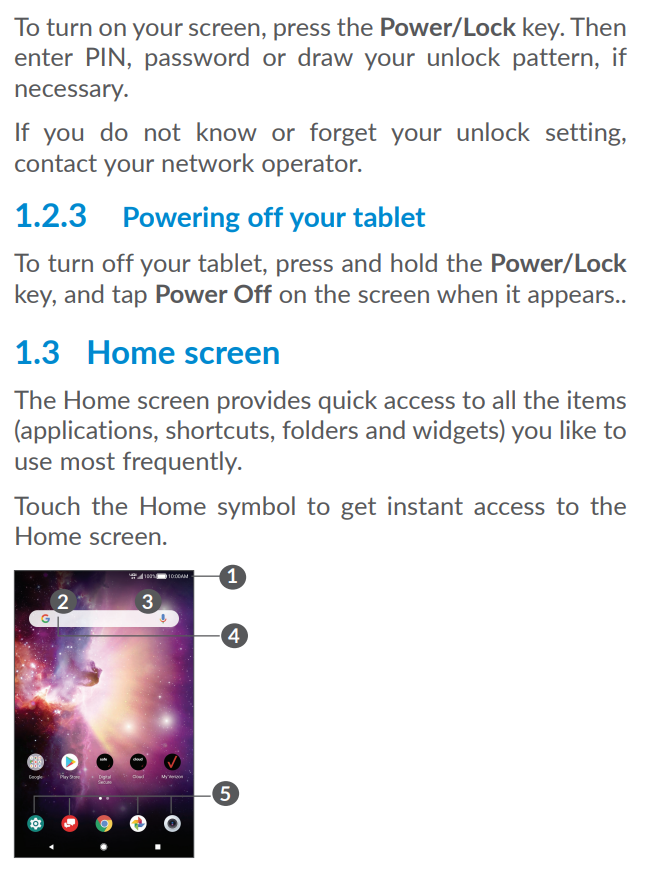
Before we dive deep, here is a short answer for the question "How to Create a Instruction or User Manual Guide"
Create a user manual by identifying your audience, outlining key functions, writing clear step-by-step instructions, and including visuals. Use consistent formatting and test the manual with real users to ensure clarity. Effective manuals reduce user errors and support product adoption.
If you’re looking to provide better support to your users, creating instruction manuals for your products should be one of your top priorities.
The fact is, your customers just aren’t going to stick around if they don’t know how to use your products. As Wyzowl recently found, 80% of users delete apps or software if they don’t know how to use them — and 55% of consumers will return a product or request a refund for similar reasons.
To be sure, you’re probably pretty familiar with instruction manuals, even if only from the consumer side.
But writing an effective user manual requires more than just typing up a few step-by-step instructions and calling it a day. If anything, this haphazard approach will likely cause more harm than good to your user’s experience with your products — and with your brand.
So, we’re going to dive deep into everything you need to know about writing user instruction manuals for your products.
What is an Instruction Manual?
An instruction manual is a document that explains how to use a product or service.
Instruction manuals are often referred to by many different names, including:
- User manuals
- Product manuals
- Product instruction manuals
…and other such variations.
An instruction manual is meant to be a comprehensive resource for anything there is to know about a given product. The main purpose of the document is to make clear to customers how to use the product to its maximum potential.
(As we’ll discuss, an effective instruction manual will do much more than that.)
What Information Do Instruction Manuals Include?
While all instruction manuals are unique in many ways, they all typically include the following content and information.
Product Identification Info
All instruction manuals should specify with clarity what product it’s referring to.
The key pieces of info to include here:
- Product name
- Model number
- Product series’ name (if applicable)
This is especially important for teams that offer multiple versions of products with slight variations between each.
Product Specifications and Description
Your instruction manual should include key information about the product, such as:
- Product dimensions
- Product features and functions Product materials and production info

Usage Instructions
What would an instruction manual be without instructions?
Here, you’ll break down the step-by-step instructions for using your product. Typically, you’ll break this down further to detail specific product features — making sure to prioritize those central to the product’s core usage.


You’ll want to include instructions for your product’s optional and/or advanced features, as well.

Finally, troubleshooting info can help your users get out of a jam — and back on the path toward success.
Glossary of Terms
A glossary is essential to explain and/or clarify the meaning of certain words, terms, and other jargon related to your products.
Source
As shown above, you may also include acronyms within your glossary — or create a separate glossary specifically for the acronyms used throughout your instruction manual.
Troubleshooting Info and FAQ
Even with proper instruction, your users will likely still run into trouble from time to time.
At the very least, they’re going to have questions about certain features, processes, or product use cases.
Source
At any rate, including troubleshooting information will all but ensure your users can continue making progress even when things don’t go exactly according to plan.
Safety Precautions
Depending on the situation, providing clear safety information within your instruction manuals could literally save lives.
Source
Even if there’s no physical risk in using your product, it’s important that your user manuals are completely transparent in this regard.
This may mean communicating how to:
- Prepare or store a product to protect quality and functionality
- Safely log in and out of digital accounts
- Dispose of products after use
…or anything else the user needs to know to stay safe while using your product. Your manuals should include clear instructions as for what users should do, who to contact, etc. when facing emergency situations.
Policies and Terms of Use
Be sure to include information regarding usage terms of your product, along with standards for quality assurance.
Source
This can help clarify any confusion around purchases, returns, exchanges, or any other request your users may have after buying your product. Similarly, warranty info can make clear what your responsibilities are should the product fail at any time.
Table of Contents and Index
Lastly, your instruction manuals should feature a table of context and an index to help users navigate the document.
Source
Incidentally, these features will also give you an overview of the document — and help you ensure you’ve covered the topics you’d wanted to within each instruction manual you create.
The Benefits of Creating Product Instruction Manuals
On the surface, the answer to this question seems pretty straightforward.
But an instruction manual can do a lot more than just teach your customers how to use your products.
Promote Correct and Optimal Product Use
As we said at the start, if your customers aren’t sure what to do with your product, they’re not going to be your customers for much longer.
Even those who have an adequate understanding of how to use your product might not stick around if they can’t use it to its full potential. Sure, they may get some value out of it — but they’ll almost certainly be missing out on major opportunities to thrive.
With comprehensive instructions in-hand, though, your users will always know exactly how to get the most out of every product you offer.
Prevent Incorrect Use of Product
At the same time, an effective instruction manual decreases the chances of your customers using your product incorrectly.
For one, your customers will never have to guess as to what to do next — and can simply refer to the document if they’re unsure.
What’s more, your instruction manuals will explicitly state how the product is not to be used.
This will further optimize user outcomes, and minimize the chances of their creating dangerous situations through misuse of your product.
Offer Self-Service Resources
Your instruction manuals give your customers even more ways to solve problems and accomplish their goals without reaching out to your support staff.
In the immediate sense, this minimizes friction for your customers, and makes it just that much easier to take the next step in their journey. Thinking of the bigger picture, your instruction manuals will empower your users to take more control over their journey — even when facing the most difficult challenges along the way.
(That said, your users will only experience this benefit if they have complete access to your instruction manuals at all times. More in a bit.)
Improve User Adoption and Retention Rates
With a comprehensive instruction manual in hand, your customers:
- Will know how to use your product to its highest potential, and
- Will have the autonomy needed to make progress on their own
This will have a major impact on your ability to onboard new users quickly and efficiently. The easier it is for them to learn to use your product, the sooner they’ll reach those initial “aha” moments and milestones.
An effective instruction manual can also help keep users onboard — and even get them more engaged with your products in the future.
Again, they’ll be more likely to stick with a product when they encounter trouble spots. Moreover, “regular” users can upgrade their skills and product knowledge with ease — potentially leading them to upgrade to a more valuable product or service tier soon after.
Save Time and Resources Internally
Taking the time to create an effective instruction manual will actually save your team a ton of time and other resources in the long run.
Firstly, your support staff will have fewer service tickets to work through — giving them more time and energy to spend on the more intensive issues your users will still occasionally face. Service engagements will also be more efficient, as both parties will maintain alignment by literally being on the same page of a product manual as they work through the problem at hand.
Bonus: An Asset for Marketing and Sales Teams
To be clear, instruction manuals are not the place for overly promotional or salesy copy and content.
However, they can have an effect on your customers’ willingness to buy from you. Your prospects, for example, can use your instruction manuals to determine which product is right for them — and what their potential options will be in the future.
(They can also determine which products aren’t for them, which will help them avoid a poor experience with your company.)
And, in general, offering all this valuable information to your customers will make them appreciate your brand more and more — and will lead to a number of other benefits for your company.
Qualities of an Effective Instruction Manual
Again, though instruction manuals vary in terms of structure and content, those that are most effective share the following qualities.
Helpful
Above all else, your instruction manuals need to be helpful.
Yes, they need to help your customers use your products, overcome challenges, and learn more about what your brand can do for them.
But “being helpful” also means optimizing the overall experience for your users.
The goal of your instruction manual isn’t to simply provide information; it’s to help the user accomplish something. While the information is the focus of the document, the following qualities are just as important to ensure your instruction manuals are truly as helpful as they can be.
Accessible
Instruction manuals should be made accessible to all users at all times, on any device.
(Really, going omnichannel is crucial to overall customer support efforts by today’s standards.)
For our purposes, offering instruction manuals openly and in multiple formats minimizes friction for the user at a time when they’re most in need of assistance. And, even when not in immediate need, they can still engage with the document however and whenever they prefer.
Many teams include their instruction manuals within their customer service knowledge base. This makes for open access to all manuals as needed — and optimizes the navigability and searchability of the document, as well.
Clear, Comprehensive, and Concise
The actual content of your instruction manuals should always follow the three C’s.
First, it must be clear. In such technical documentation, clarity of language, visual aids, and other media is crucial to the user’s comprehension. The meaning of all instructional content should be self-evident, with minimal room for interpretation throughout the document.
An instruction manual should cover the product (and specific product usage) comprehensively — leaving no information unsaid, and no questions unanswered. As needed, the manual may explain certain points in greater detail either directly or via additional resources.
Source
At the same time, being concise allows your users to quickly find the info they’re looking for — and just as quickly put it to use. And, this brevity will decrease instances of misunderstanding that could be disastrous to the user experience.
User-Centric
All instruction manuals should be created specifically for the end-user.
The user’s knowledge, skills, and abilities, for example, should factor into a number of decisions, such as:
- Use of jargon, acronyms, and other verbiage
- The depth of explanations and illustrations needed
- The inclusion of additional instructions or resources
Many brands even offer multiple instruction manuals for single products for different users and use cases.
Source
As shown above, effective instruction manuals also speak directly to the individual — not to a faceless “user”. This shift in language and overall tone adds a layer of personableness to the experience that reinforces the brand’s dedication to their audience’s success.
Visual
Great instruction manuals don’t shy away from the use of visual aids.
Photographs, illustrations, diagrams…all of it (and more) should be used frequently to clarify and further the user’s understanding of a concept or process. In some cases, graphic aids alone may be sufficient for helping the user accomplish a task.
Source
Digital instruction manuals often include animated illustrations and video demonstrations.
Organized
Effective instruction manuals are organized to maximize usability and navigability — and to aid user comprehension.
Firstly, they’ll include the table of contents, index, glossary, and other traditional aspects as expected. On top of their actual functions, the mere existence of these assets makes for a more familiar experience for users, even when the content is unfamiliar.
The information within effective instruction manuals is appropriately scaffolded, as well. In other words, it’s presented so that user knowledge is constantly building on itself, with each piece of information preparing the reader for the next.
Note, for example, how Nureva focuses first on pre-installation recommendations, then leads readers to installation guides and other in-depth content.
Branded
Top-notch instruction manuals have a branded look, tone, and feel to them without distracting the reader from the purpose of the document.
Typically, this means taking advantage of spaces where branding is more appropriate and expected. For example, Apple rarely refers to itself throughout its manuals – except when required for demonstrative purposes.
Source
But, again, branding is always secondary to the goal of showing the customer how to use the product.
Strategies to Writing an Effective Instruction Manual
Alright, so you know your instruction manuals will need to adhere to everything we discussed above.
Now, let’s look at how to make it happen.
1. Set Clear Goals
Your first order of business is to set clear goals for the overall initiative.
Start by asking the question, “Why are we creating this instruction manual?” — and going beyond the surface with your answer. While the obvious answer is “to help our customers use our product successfully”, nail down clear statements that define:
- What “successful product use” means in this instance
- What successful use of the product will enable users to do
- Why this is important to their journey
Then, start thinking about the quantitative metrics, such as CSAT and CES, along with conversion, adoption, and retention rates.
In setting more specific and contextual goals to strive for, you’ll be better able to measure the impact of your new instruction manuals — and to make laser-focused improvements to your documentation in the future.
2. Think Like Your Users
In order to create a user-centric instruction manual that gives your customers what they need, you need to put yourself in their shoes.
First, consider who they are in terms of persona, audience segment, and how they engage with your brand. This will help you set the correct tone for the manual — along with your approach to creating it.
Then, answer the following questions about your user:
- What background knowledge and skills do they have that relate to the product?
- What required knowledge or skills do they not have? How can you teach them?
- What questions might they have as they learn to use the product?
With this knowledge, you can deliver the exact information your users need at a given moment in order to get maximum value from your product.
Lastly, think about how your users typically engage with branded content and documentation. While striving toward omnichannel is still the ticket, you at least want to make your instruction manuals available via your customers’ preferred methods.
Thinking like your users allows you to anticipate their needs at every step — and to provide the exact guidance they need to press forward with confidence.
3. Involve All Stakeholders and Team Members
Creating an instruction manual should be a collaborative process involving a number of stakeholders within your organization.
For example:
- Dev and Design teams can provide product features, functions, and specs; break down processes into specific and sequential steps; check the document for accuracy and comprehensiveness.
- Customer Service and Support can help identify key information to focus on; provide insight into user issues; assess manuals for digestibility.
- Marketing and Sales can keep messaging on brand as needed, and can also provide insight into your customers’ frequently asked questions and such.
And, regardless of their specialty, getting additional eyes on the document will minimize typos, grammatical errors, and other simple mistakes.
4. Create and Use Instruction Manual Templates
Over time, you’re going to end up creating more than one instruction manual.
Instead of starting each guide from scratch, why not create a boilerplate template from the get-go?
Internally, it gives your team a head start on each initiative — and aids in the development of standardized, repeatable processes for creating new manuals. As we’ll get to in a moment, the use of templates makes it easier to identify and make improvements to your documentation moving forward.
For your users, templates provide a sense of consistency and familiarity at a time of relative uncertainty. Practically speaking, it makes it easier for returning users to navigate each instructional document you publish. These consistently positive self-service instances will continually reinforce your users’ trust in your brand.
To be sure, you will need to tweak your instruction manual templates for every new document you create, for a variety of reasons. But starting with the template that’s been most effective thus far will easily get your efforts started on the right foot.
On that note…
5. Collect Usage Data and Feedback — and Make Improvements
The only way to know whether your instruction manuals have been effective or not is to collect usage data and feedback from your customers.
Regarding usage data, you want to pay close attention to things like:
- What pages and content are being accessed most frequently
- How long users tend to stay on a page, or in a session
- What their paths look like when navigating the document
Zooming out, you also want to analyze the context of these engagements as best you can. Knowing what a user did before and after checking out your instruction manual will allow you to better understand their needs, and gauge your ability to help them.
User feedback should play a key role as you make improvements to your instruction manuals. In some cases, you might ask users to provide feedback via well-timed surveys and similar forms.
Customer support tickets, marketing and sales conversations, and other engagements can provide valuable insight into your user’s instructional needs, too. In analyzing these engagements, you’ll uncover:
- Questions and problems your customers still have regarding your product
- Information they’re unaware of that should be included in your manuals
- Issues they have with accessibility and usability of your manuals
With all this data in hand, you’ll be able to make ultra-specific improvements to your individual user manuals, your instruction manual templates, and your approach to creating this documentation on the whole.
Use Helpjuice to Create, Present, & Manage Instruction Manuals
Let’s face it:
To create the type of engaging, navigable, and user-friendly instruction manual your customers need, you’ll likely need some digital assistance.
While many basic documentation tools can help you get started, you’ll eventually want to move onto dedicated AI-enhanced knowledge base software to a) optimize your documentation efforts, and b) deliver a more valuable experience to your customers.
Which is where we come in.
With Helpjuice, your team can collaborate in real-time to create rich, comprehensive, interactive instruction manuals for your users — then make them easily accessible to your user base as needed. And, with our reporting tools in hand, you’ll always know how to make your manuals more helpful and empowering to your customers over time.
Want to learn more? Schedule a demo with Helpjuice today!


![14 Zoom Alternatives for Team-Wide Video Conferencing [2023]](https://static.helpjuice.com/helpjuice_production/uploads/upload/image/4752/direct/1586534415247-1586351118228-Zoom%20Alternatives.png)